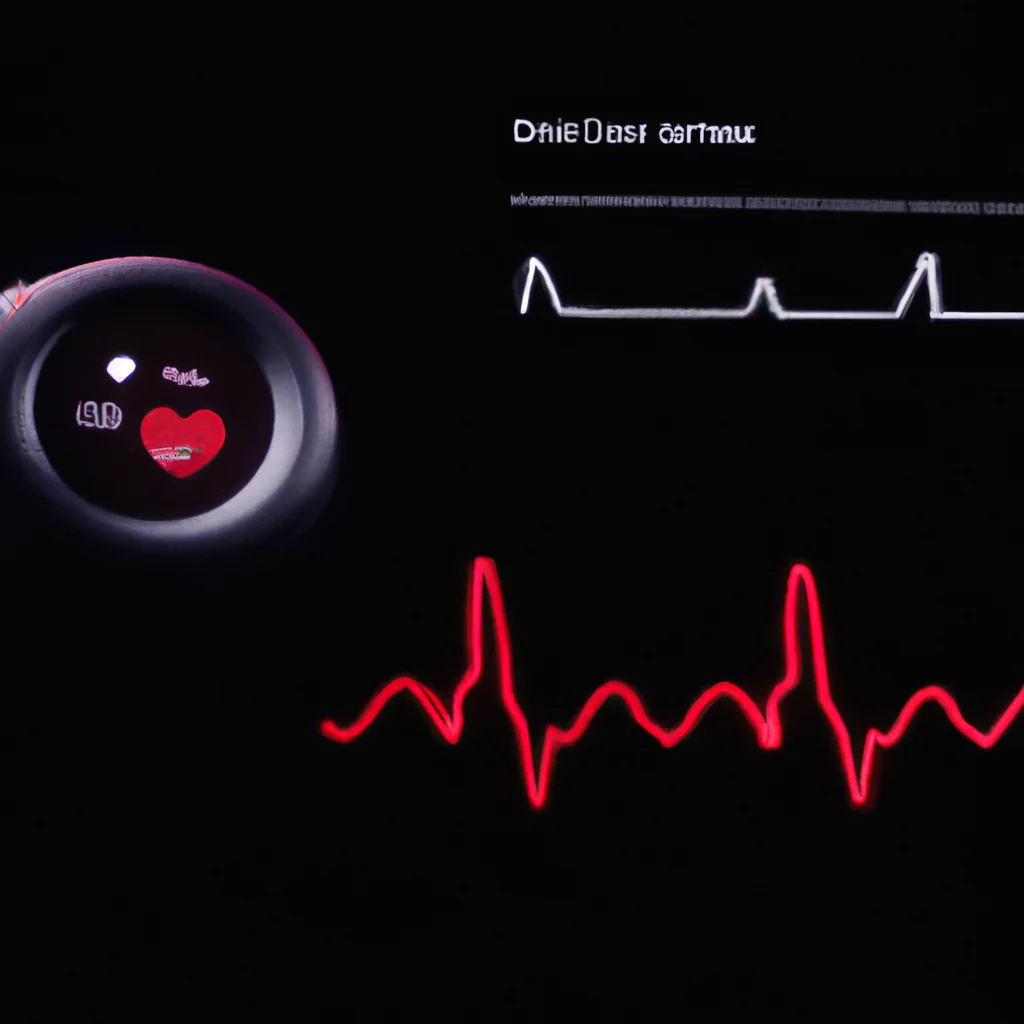How does a pacemaker control heart rate?


How does a pacemaker control heart rate?
The heart is a complex organ that pumps blood throughout the body. The heartbeat is controlled by electrical signals that originate in a small area of the heart called the sinoatrial (SA) node. The SA node acts as the natural pacemaker of the heart, generating electrical impulses that travel through the heart’s electrical system and cause the heart to contract.
However, sometimes the heart’s electrical system can malfunction, leading to irregular heartbeats or arrhythmias. This is where a pacemaker comes in. A pacemaker is an implantable medical device that helps regulate the heart’s electrical system and control heart rate.
How does a pacemaker work?
A pacemaker is a small device that is implanted under the skin, usually near the collarbone. It consists of a battery, a pulse generator, and one or more leads. The leads are thin wires that are threaded through a vein and into the heart.
The pulse generator is the “brain” of the pacemaker. It sends electrical signals to the heart through the leads, which help regulate the heart’s electrical system and control heart rate.
There are different types of pacemakers, but they all work in a similar way. The pacemaker constantly monitors the heart’s electrical activity and sends out electrical signals when needed to control heart rate.
When the pacemaker detects that the heart is beating too slowly or irregularly, it sends out a small electrical signal to the heart muscle, which causes the heart to contract. This helps maintain a regular heartbeat and ensures that the heart is pumping enough blood to the body.
Types of pacemakers
There are two main types of pacemakers: single-chamber pacemakers and dual-chamber pacemakers.
Single-chamber pacemakers have one lead, which is placed in either the right atrium or the right ventricle of the heart. These pacemakers are used to treat heart block or slow heart rates.
Dual-chamber pacemakers have two leads, which are placed in both the right atrium and the right ventricle of the heart. These pacemakers are used to treat more complex arrhythmias, such as atrial fibrillation.
Benefits of pacemaker therapy
Pacemaker therapy is a safe and effective way to treat arrhythmias and control heart rate. It can improve quality of life by reducing symptoms such as fatigue, fainting, and shortness of breath.
Pacemakers can also prevent serious complications such as heart failure and stroke, which can occur when the heart is not pumping enough blood to the body.
In addition, pacemakers are designed to last for many years, and most people with pacemakers are able to lead active, normal lives.
Conclusion
In conclusion, a pacemaker is an implantable medical device that helps regulate the heart’s electrical system and control heart rate. It consists of a battery, a pulse generator, and one or more leads that are threaded through a vein and into the heart.
Pacemakers constantly monitor the heart’s electrical activity and send out electrical signals when needed to control heart rate. There are different types of pacemakers, including single-chamber and dual-chamber pacemakers.
Pacemaker therapy is a safe and effective way to treat arrhythmias and control heart rate. It can improve quality of life and prevent serious complications such as heart failure and stroke.
Recent Posts
How do I create an engaging and informative online quiz or assessment?
Creating an engaging and informative online quiz or assessment can be a powerful tool for… Read More
What are the most effective methods for managing and reducing work-related stress in the hospitality industry?
Work-related stress is a common issue in the hospitality industry, where employees often face long… Read More
How can I improve my assertiveness and communication skills in a leadership position?
In a leadership position, assertiveness and effective communication skills are crucial for success. Being able… Read More
What are the key elements of a successful employee recognition and rewards program?
Employee recognition and rewards programs play a crucial role in motivating and engaging employees, as… Read More
How do I effectively manage and respond to customer feedback and reviews?
Customer feedback and online reviews play a crucial role in shaping a company's reputation and… Read More
What are the best strategies for effective time management as a stay-at-home parent?
Effective time management is crucial for stay-at-home parents who juggle multiple responsibilities on a daily… Read More